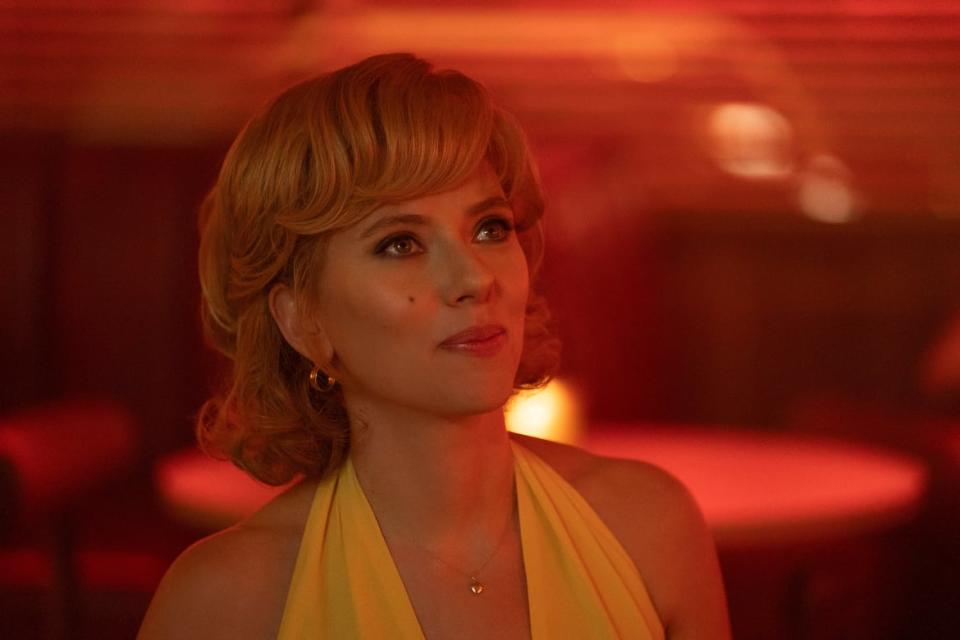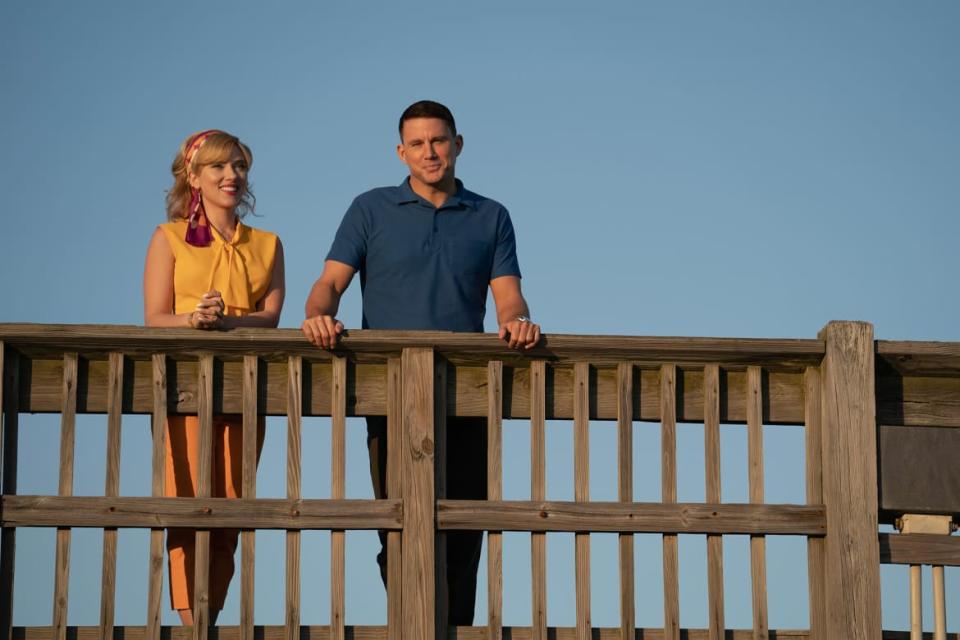A romantic comedy with delusions of dramatic grandeur, Fly me to the moon (July 12, in theaters) has a lighthearted premise that’s treated with a sad degree of seriousness.
Director Greg Berlanti’s film features two likable stars in a story that playfully plays on a well-known conspiracy theory about the historic Apollo 11 moon landing. But instead of using its brash conceit for easy humor and seductive loveit spends an inordinate amount of time on trauma, guilt, regret, and other heavy topics that are just as ill-suited as they are superficially treated. It aims for the stars, but it proves to be a laborious endeavor that rarely gets off the ground.
In late-’60s Manhattan, Kelly Jones (Scarlett Johansson) is a hotshot ad exec who fakes pregnancy while delivering a dynamite speech that charms the pants off of chauvinistic Ford executives. Kelly is a proto-Don Draper and, as it soon turns out, also a female Saul Goodman—a con artist in cutesy, old-fashioned outfits who operates under one of several false identities. This is precisely what makes her so attractive (and manipulable) to Moe Berkus (Woody Harrelson), a shady aide to President Richard Nixon who wants Kelly for a top-priority job: selling the impending moon landing to the American public.
Kelly, who becomes NASA’s chief public relations officer, travels to Cape Canaveral, where she immediately butts heads with Cole Davis (Channing Tatum), the gruff, no-nonsense launch director who wears countless variations of the same button-down shirt. Cole’s heroic success in detecting a gas leak with a broom suggests that he does things the old-fashioned way, which, it turns out, means honestly. To him, Kelly is not just an interloper on Madison Avenue but a fundamentally deceitful person who cares more about profit than true American values like loyalty and honesty. So, Fly me to the moon establishes the core conflict, with Cole focused on people and the truth, while Kelly prioritizes products and lies.

This would be a fine setup if the film were interested in generating lively momentum. But despite Kelly placing Apollo astronauts Neil Armstrong, Buzz Aldrin and Michael Collins on boxes of Rice Krispies, the action lacks the requisite snap, crackle and pop. Cole is irritated by Kelly’s desire to promote the moon landing through partnerships with Omega, Tang and Chevrolet, but he grudgingly concedes that it provides the revenue the struggling aerospace agency needs. He is less happy about Kelly’s insistence (urged by Moe, who usually shows up unannounced like the dark ghost that he is) that a camera be attached to the outside of Apollo 11 in order to broadcast Armstrong’s giant leap for mankind to a worldwide TV audience. From a plot standpoint, this is preposterous; the idea that NASA would fail to document this groundbreaking journey strains the very credibility of the events. Worse, it seems at odds with the theme of the material. After all, Cole, who is a proponent of integrity, would like to present this achievement faithfully to the world.
The veracity of the moon landing (and its public presentation) turns out to be crucial to Fly me to the moonwhich ultimately revolves around Moe ordering Kelly to orchestrate a fake version of the landing as a backup plan in case the real mission fails. This would-be fail-safe is produced at the NASA base in a heavily guarded hangar and is overseen by Kelly’s favored director, Lance Vespertine (Jim Rash), whose prima-donna flamboyance is supposed to be funny. His bland unimaginativeness extends to the rest of the film’s supporting characters, who are barely allowed to try to be funny. This goes for Kelly’s anti-Nixon aide (Anna Garcia) and Cole’s wet-behind-the-ears engineers (Noah Robbins, Donald Elise Watkins), and it’s especially true of Cole’s featureless right-hand man, Henry Smalls (a wasted Ray Romano), whose sole purpose is to convey his boss’s greatness to Kelly.
Cole is deliberately kept in the dark about Kelly’s top-secret project, which is based on the long-standing, tall tale that the moon landing was filmed on a sound stage by Stanley Kubrick, who is mentioned somberly twice to emphasize the connection. As they both try to get Armstrong, Aldrin, and Collins to the lunar surface, Cole and Kelly slowly begin a romance—with the emphasis on the word “slowly,” since Fly me to the moon drags its feet at almost every turn, though its strides are painfully predictable. Rose Gilroy’s script can’t come up with a single plausible reason that Cole and Kelly might like each other other than that he finds her attractive and vice versa, and the idea that the two share an opposite-attract spark is more fiction than tangible reality. For all of Johansson and Tatum’s inherent charisma, they have little chemistry — a byproduct of the ponderous screenplay as much as their performances.


Scarlett Johansson and Channing Tatum in Fly me to the moon.
Dan McFadden/Apple TV+
Fly me to the moon is littered with scenes that are narratively and thematically redundant, not to mention inappropriately toned, including a TV interview in which Cole loses it when pressed about his culpability in the Apollo 1 tragedy. At times, the film feels solemn and incongruous with the fundamentally cartoonish nature of everything from the characterizations and interpersonal dynamics to the simplistic portrayal of the space program itself (it’s tough to hear Tatum ramble on about mission details). Rather than aiming for lighthearted, frivolous silliness, Gilroy steers his saga toward seriousness. In the process, he so sabotages any mindless energy that when, at the climax, he tries to elicit laughs from the sight of fake astronauts crashing into each other, the effort comes across as forced and futile.
In keeping with the principle of Chekhov’s gun, a black cat drives Cole mad at the beginning of the war Fly me to the moon proves to be the catalyst for a surprising triumph. While not a stroke of bad luck, the feline is an uninspired device in a film full of them. Most disheartening is a finale that continues to recreate the Apollo 11 undertaking from various mundane angles, evoking zero tension and awe as it stretches the undertaking to unmanageable lengths. At a whopping 132 minutes, Berlanti’s latest film feels nearly as long as his famous interstellar expedition, and infinitely less memorable.
Read more at The Daily Beast.
Get the Daily Beast’s biggest scoops and scandals delivered straight to your inbox. Subscribe now.
Stay informed and get unlimited access to the Daily Beast’s unmatched reporting. Subscribe now.